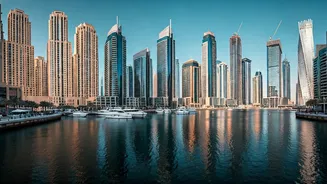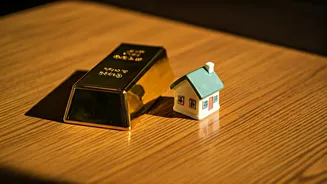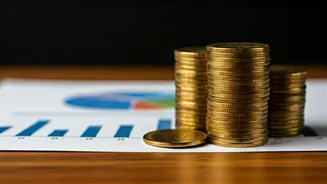Dubai’s Allure
Dubai's emergence as an investment hotspot for India's middle class is a story of changing financial landscapes. It’s no longer just the wealthy investing
in Dubai; now, salaried individuals and small business owners are finding it accessible. This shift is driven by the promise of tax-free income, transparent regulations, and the possibility of securing residency through the Golden Visa program. In 2024 alone, Indian investors poured approximately ₹84,000 crore into Dubai's property market, indicating a significant trend. The appeal lies in the potential for higher rental yields, often ranging from 5–11% in Dubai compared to 3–5% in India, making it a pragmatic choice for wealth building. The city's rapid population growth, from 2 million in 2011 to an estimated 4 million in 2025, with projections to reach 5 million by 2030, further supports this trend.
Financial Advantages
The financial incentives in Dubai are a major draw. Rental income is tax-free, and there are no annual property taxes, capital gains taxes, or stamp duties beyond a one-time 4% fee to the Dubai Land Department (DLD). This structure provides a financial edge. Property owners in Dubai can potentially generate significantly higher returns compared to the Indian market. For instance, a property worth approximately ₹2 crore can potentially yield about ₹1.8 lakh monthly. In contrast, a similar property in an Indian metro might generate a much lower rental income, barely covering expenses. Furthermore, mortgage rates in Dubai hover around 5%, creating a favorable environment for investors. Developers also offer payment plans, which help investors to spread payments over a period of 5-10 years.
Key Considerations
While the Dubai property market presents attractive opportunities, potential investors must also consider some essential factors. India's Liberalised Remittance Scheme (LRS) limits remittances to USD 250,000 (about ₹2.1 crore) per person per year, often requiring joint accounts or phased payments for larger purchases. Remittances above ₹10 lakh attract a 5% Tax Collected at Source (TCS), although adjustments can be made later during filings. Investors should also be aware of service costs, with annual maintenance charges potentially reaching AED 30 per sq ft (₹720 per sq ft), varying based on the property. Currency exposure is another consideration, as the dirham is pegged to the US dollar; a weakening rupee can increase the cost of entry and loan repayments. Buyers can typically acquire a mid-tier Dubai property for AED 1–3 million (₹2.4–7.2 crore), often with a 20% down payment (₹35–50 lakh).
Golden Visa Benefit
The Golden Visa program adds another layer of attraction for Indian investors. With a minimum property investment of AED 2 million (₹4.8 crore), investors qualify for a renewable five or ten-year residency permit. This offers more than just financial returns; it offers residency flexibility and access to education and healthcare for families. The program's expansion in 2022 has nearly doubled issuances in 2023, with Indians constituting a large group of applicants. Furthermore, the streamlined processes are appealing. Digital property titles, mandatory escrow accounts, and monitored timelines offer transparency. Property registrations are handled through the Dubai Land Department’s online portal and title certificates are issued electronically.
Real Estate Dynamics
India's real estate sector is also evolving, providing a more mature investment environment domestically. Regulatory frameworks like RERA, digitized land records, and GST compliance have improved transparency. Furthermore, REITs have emerged, making it possible for smaller investors to earn rental income from Grade-A commercial assets. Indian REITs have shown solid returns, with annual returns ranging from 10–13% over the past five years. These REITs provide a domestic alternative to overseas property investment. Urban redevelopment projects and infrastructure developments also create demand for real estate. This includes metro corridors, expressways, and affordable housing schemes. These developments underpin long-term value.
A Practical Move
For many Indian middle-class families, Dubai is becoming a strategic move. A ₹2 crore apartment in Mumbai, which might rent for about ₹50,000 monthly, could cover just the maintenance and part of the EMI. In Dubai, the same amount can potentially purchase a one-bedroom flat. Rental yields in areas like Jumeirah Village Circle or Dubai South can average from 7% to 9%. Dubai’s environment offers a chance for disciplined investors to build assets abroad. The streamlined online processes for registration and property management make it a friction-light process. Buyers can manage transactions remotely. These factors, together with a stable currency and potential visa benefits, make it a compelling move for diversifying their assets.















